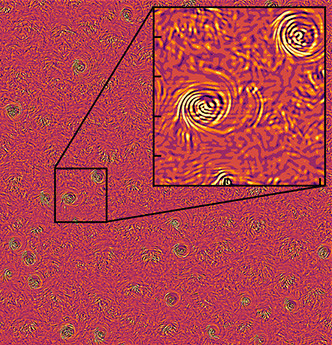FLOW article highlighted in AIP Scilight

The article titled 'A two-dimensional toy model for geophysical turbulence' by Erik Lindborg and Ashwin Vishnu Mohanan, Physics of Fluids (2017), has been highlighted in AIP Scilight.
The article titled "A two-dimensional toy model for geophysical turbulence" by Erik Lindborg and Ashwin Vishnu Mohanan, Physics of Fluids (2017), has been highlighted in AIP Scilight . The authors have developed a simple 2-D model that behaves more like a 3-D one and can explain motions in a range corresponding to atmospheric wavelengths between 2 and 500 kilometers.
Scilights showcase the most interesting research across the physical sciences published in AIP Publishing Journals.
The article can be accessed at https://doi.org/10.1063/1.4985990.
Abstract:
A toy model for large scale geophysical turbulence is constructed by making two modifications of the shallow water model. Unlike the shallow water model, the toy model has a quadratic expression for total energy, which is the sum of Available Potential Energy (APE) and Kinetic Energy (KE). More importantly, in contrast to the shallow water model, the toy model does not produce any shocks. Three numerical simulations with different forcing are presented and compared with the simulation of a full General Circulation Model (GCM). The energy which is injected cascades in a similar way as in the GCM. First, some of the energy is converted from APE to KE at large scales. The wave field then undergoes a forward energy cascade displaying shallow spectra, close to k^(−5/3), for both APE and KE, while the vortical field either displays a k^(−3)-spectrum or a more shallow spectrum, close to k^(−5/3), depending on the forcing. In a simulation with medium forcing wave number, some of the energy which is converted from APE to KE undergoes an inverse energy cascade which is produced by nonlinear interactions only involving the rotational component of the velocity field. The inverse energy cascade builds up a vortical field at larger scales than the forcing scale. At these scales, coherent vortices emerge with a strong dominance of anticyclonic vortices. The relevance of the simulation results to the dynamics of the atmosphere is discussed as in possible continuations of the investigation.
